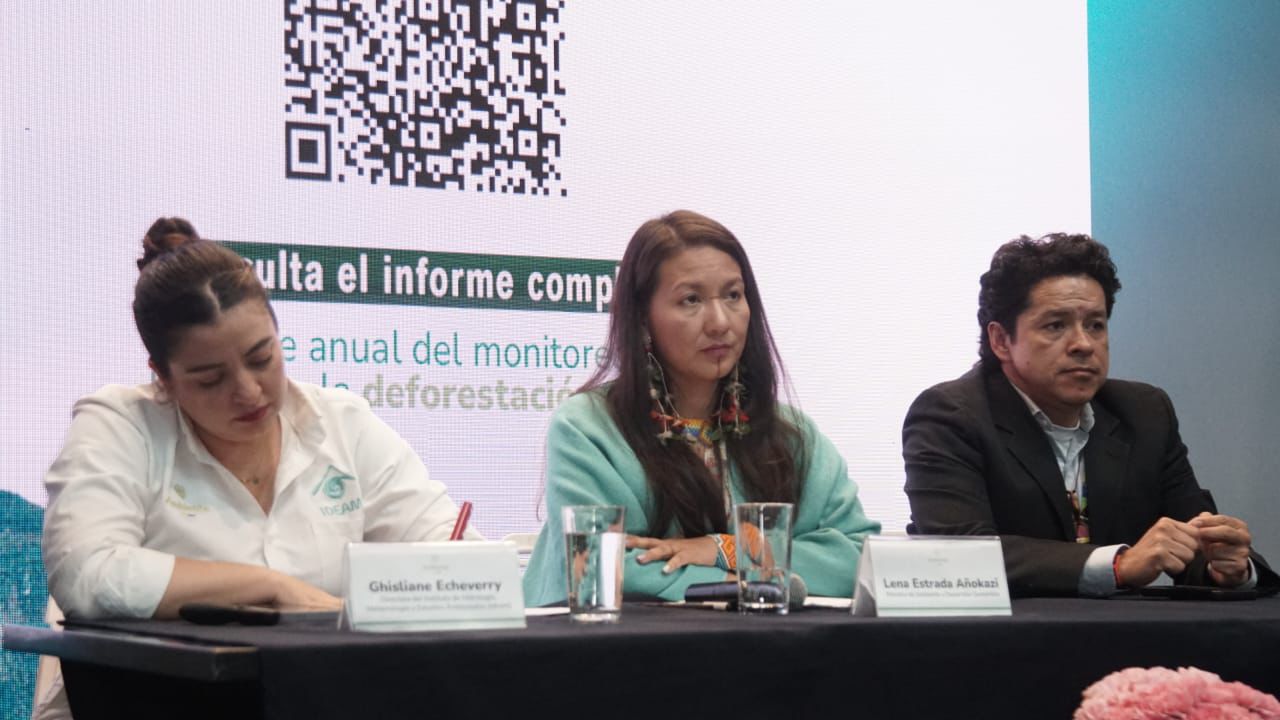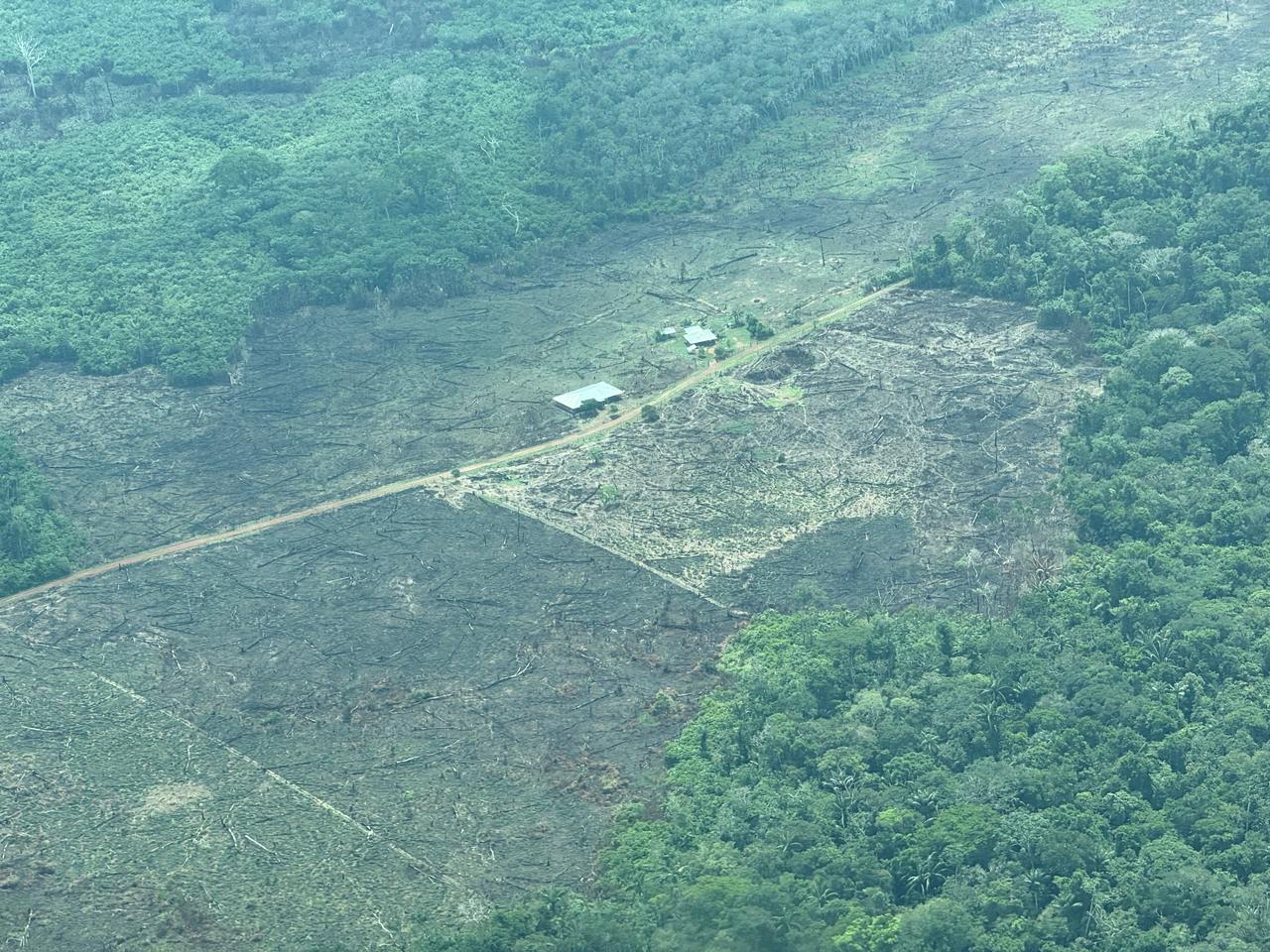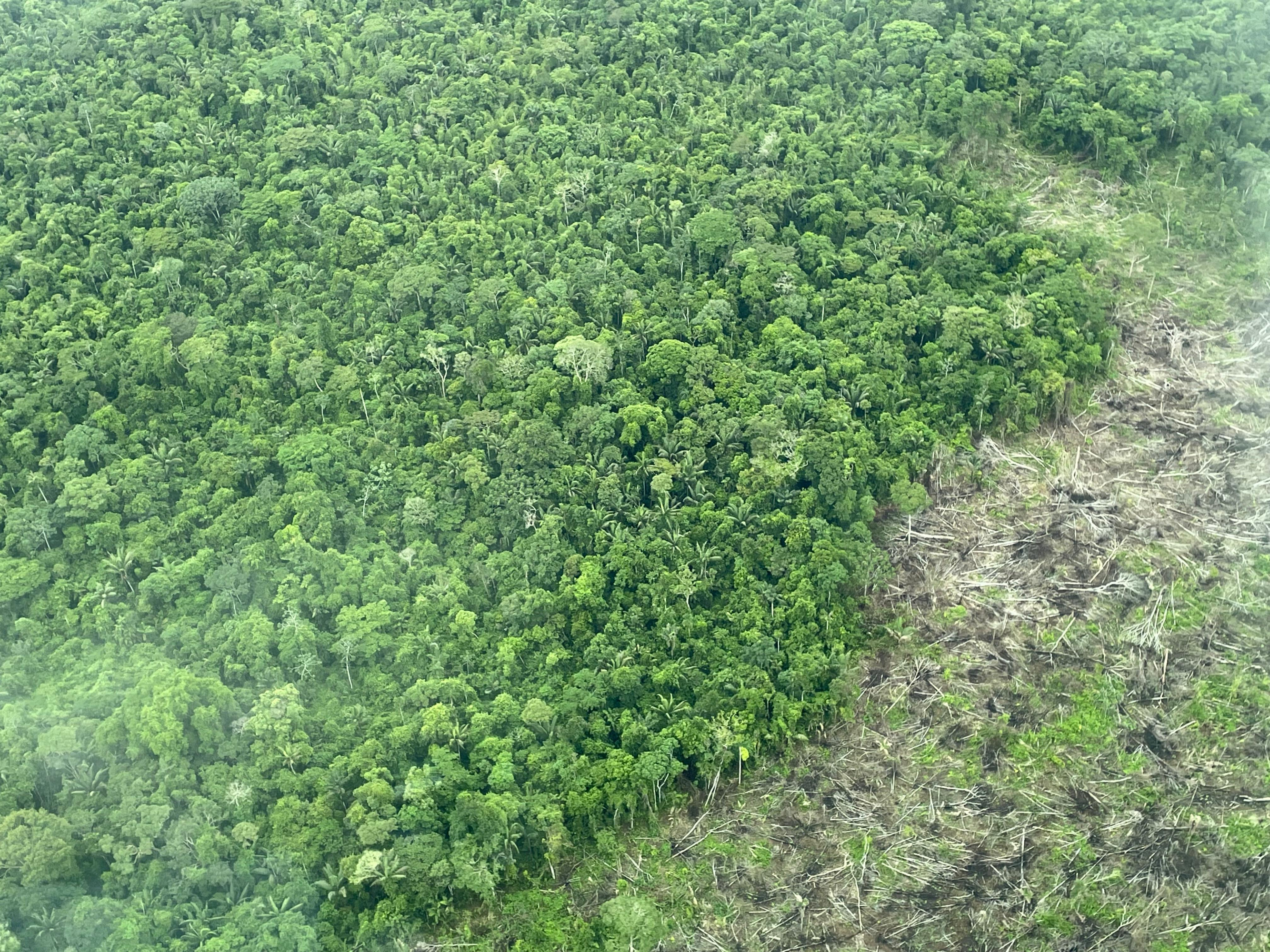The reasons why deforestation figures from the Government and international platforms such as Global Forest Watch do not match

Figures on deforestation in Colombia can vary widely depending on the source. While the Forest and Carbon Monitoring System (SMByC), led by the Institute of Hydrology, Meteorology and Environmental Studies (IDEAM), reported a loss of 113,608 hectares in 2024, international platforms such as Global Forest Watch report 213,031 hectares, which shows a clear discrepancy between the two measurements.
In this regard, this Thursday during the presentation of the 2024 annual deforestation report, Environment Minister Lena Estrada Añokazi defended the methodology used for this measurement, despite the figures being substantially different, emphasizing that this difference is due to the data used and defending the model applied in the country due to its specificity to the territory.
"This methodology is adapted to our territories, to our soils. These are the real deforestation figures we are going to present to you today, and not any other external measurement. We have to trust in our Colombian work, in our product, in our institutions, in our teams that are making an enormous effort to perfect this monitoring system," the head of the environmental portfolio emphasized.

Presentation of the annual deforestation report this Thursday, July 31, 2025. Photo: Ministry of the Environment
According to Ederson Cabrera, coordinator of SMByC, the fundamental difference lies in the definitions and methodologies used. “Our system generates official information for Colombia using the country's official definition of forest and deforestation. In contrast, other platforms seek to monitor the state of forests globally, from Indonesia to Colombia, and are not tailored to our ecological conditions or regulations,” Cabrera stated.
One of the main differences is what is measured. While SMByC focuses strictly on monitoring natural forests and processes that constitute deforestation under Colombian law, Global Forest Watch records tree cover loss. This concept includes not only the felling of trees in natural forests, but also the removal of isolated trees—for example, in urban areas or crops—which do not necessarily constitute deforestation under local standards.

Since the end of 2023, deforestation in the Amazon, which had been halted, has picked up again. Photo: USAID
That is, platforms like Global Forest Watch use satellites to measure each tree cut down, while IDEAM uses SMByC to monitor forest loss, and only in areas where the scourge of deforestation is measured.
"That's why tree cover loss figures tend to be higher: they include all the possible changes occurring in the planet's forests. In contrast, our figures are more precise and limited to Colombia's natural forests," Cabrera explained.
Furthermore, there are differences in the forest types assessed. International platforms also use indicators such as "primary forest loss," which only consider the best-preserved forests. This may result in lower figures than those of IDEAM, Cabrera stated, since the Colombian entity includes all types of natural forest within the country.

Little by little, deforestation is destroying the Amazon's virgin forest. Photo: Edwin Caicedo. EL TIEMPO
For Cabrera, it is important to recognize the value of both sources of information. However, he clarifies that "official information from the forest monitoring system is used for decision-making in Colombia." In his view, while international platforms can be useful for obtaining a more comprehensive or comparative view of the state of the world's forests, they do not replace the specificity and technical focus of the national system.
Environment and Health Journalist
eltiempo





